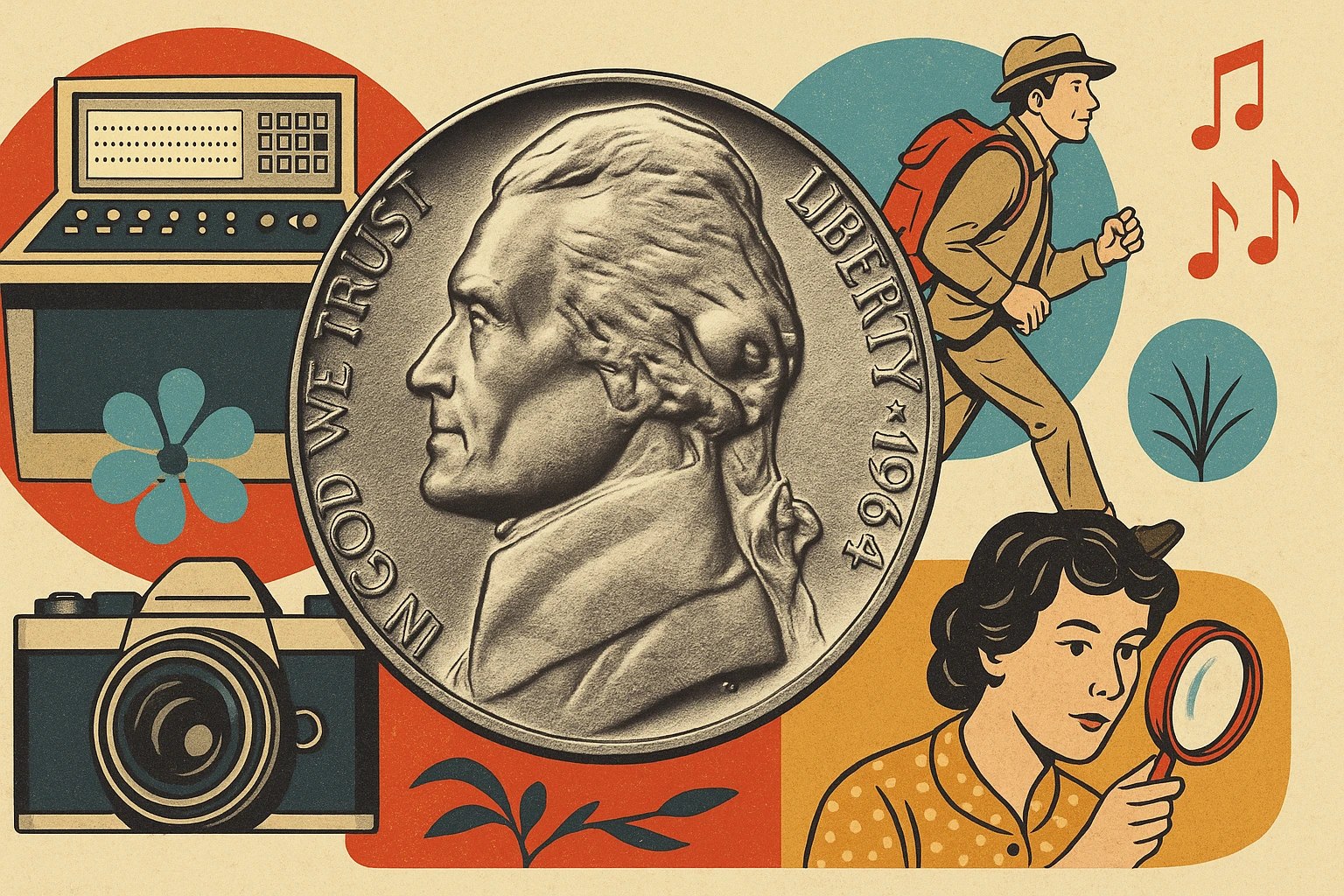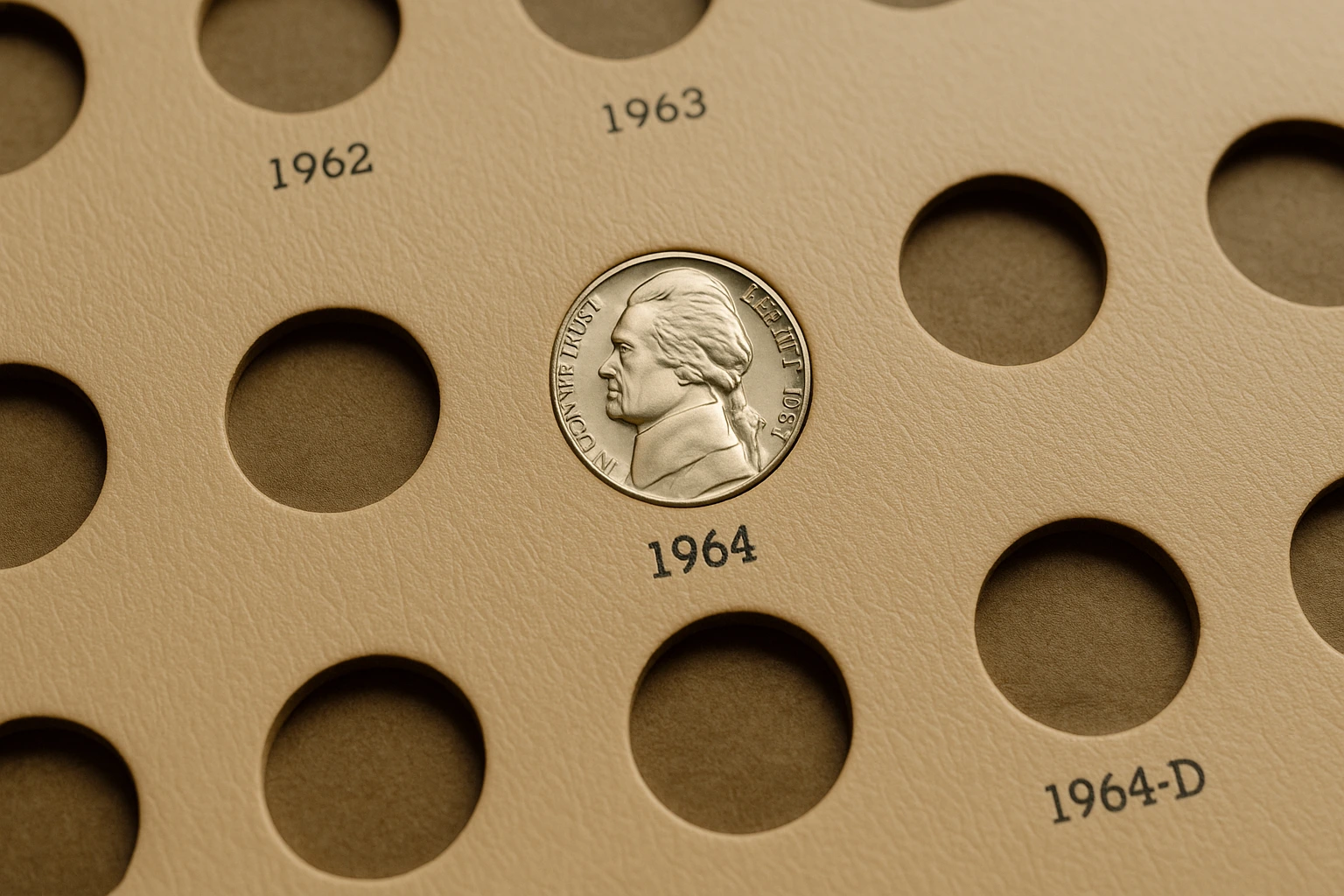Collectors, hobbyists, and curious travelers often overlook the ordinary-looking nickel nestled in their pocket change. But not all nickels are created equal—especially those minted in 1964. At first glance, a 1964 Jefferson nickel may seem like just another outdated coin. In reality, it holds a unique place in numismatic history—and for some lucky finders, surprising financial value.
This guide uncovers what makes certain 1964 nickel value no mint mark worth far more than face value, why collectors love them, and how technology is changing the game for everyday explorers and serious numismatists alike.

Why 1964 Nickels Fascinate Collectors
The 1964 Jefferson nickel is a benchmark coin for several reasons, especially among U.S. coinage. Its appeal lies not just in how many were made—but in what they represent.
- Mintage Milestone: Over 2.8 billion nickels were struck in 1964 across the Philadelphia and Denver mints, making it the highest mintage year for the series up to that point.
- End of an Era: It was the final year before major shifts in U.S. coin production. Rising silver prices led the U.S. Mint to phase out silver in dimes, quarters, and half dollars. While nickels were never struck in silver (except for wartime issues from 1942–1945), 1964 still marks a symbolic boundary in mid-century U.S. coinage.
- Frozen Date Policy: Due to coin shortages, the U.S. Treasury ordered the Mint to continue producing 1964-dated nickels into 1965 and beyond, making it one of the few coins with a “frozen” date—adding an extra layer of intrigue for historians and collectors.
In short, 1964 nickels sit at a crossroads in minting history. They are technically common, but within their billions lie hidden rarities—diamonds in the rough that collectors actively pursue.
What Makes a 1964 Nickel Valuable?
So, how do you separate a valuable 1964 nickel from the pocket change filler? Several factors can drastically influence the coin’s worth:
1. Condition (Grade)
Grading is the cornerstone of coin valuation. A 1964 nickel with no visible wear, sharp details, and full steps on Monticello (the building on the reverse) can demand impressive premiums.
| Grade | Description | Typical Value |
| G4 | Good – heavily worn | Face value (~$0.05) |
| VF20 | Very Fine – moderate wear | $0.10–$0.25 |
| AU50 | Almost Uncirculated | $0.50–$1.00 |
| MS65+ | Mint State – no wear | $10 to $75+ |
| FS Designation | Full Steps (sharp detail) | $100–$500+ (rare examples) |
Note: Even minor differences in grade can shift a coin’s value significantly.
2. Mint Mark and Rarity
Most 1964 nickels carry no mint mark (Philadelphia) or a small “D” (Denver). While both versions are plentiful, some “D” mint coins display unusual characteristics that increase their desirability.
- Repunched Mint Mark (RPM): A doubling of the “D” mark caused during the minting process.
- Missing Mint Mark: Extremely rare and usually linked to planchet or die anomalies.
- Low-Strike Quality: Some coins have weak strikes, but strong-strike examples with full details command higher value.
3. Error Coins
Collectors love the oddities. And 1964 nickels delivered a few notable ones:
- Double Die Obverse (DDO): Look closely at the date or inscriptions like “IN GOD WE TRUST.” If the lettering appears doubled, it could be a DDO—an error type that excites serious interest.
- Off-Center Strikes: When a coin is misaligned during minting, parts of the design shift off the planchet. The more dramatic the error, the higher the value.
- Die Cracks & Cuds: These occur when parts of the minting die break, creating raised, unusual lines or blobs on the coin. Rare examples can bring in collector premiums.
4. Market Demand
Just like real estate or classic cars, the coin market fluctuates. Fortunately, 1964 nickels remain a hot commodity in collector circles, especially among those completing full Jefferson nickel sets. Coins with Full Steps, error features, or superb luster continue to outperform their mundane counterparts.
5. Debunking the Silver Myth
A recurring misconception is that 1964 nickels contain silver. They do not. Only nickels from 1942 to 1945 (Wartime Nickels) contain 35% silver. The standard composition of a 1964 nickel is:
- 75% Copper
- 25% Nickel
Still, that doesn’t diminish its value. The coin’s worth lies not in its metal, but in its condition, rarity, and collector appeal.

Notable Varieties and Errors to Watch For
Careful observation—especially under magnification—can reveal the tiniest details that turn a common coin into a prized specimen. Here are the most important types of valuable 1964 nickel errors and varieties:
1. Double Die Obverse (DDO)
A double die occurs when the coin die itself has been improperly manufactured, resulting in doubling of the design on the coin’s surface. For the 1964 nickel:
- Focus on the date, “LIBERTY”, and “IN GOD WE TRUST” inscriptions.
- Doubling may appear as shadows or slight overlapping of letters and digits.
Collector tip: Strong doubling is rare. If it’s clearly visible to the naked eye or under 10x magnification, it may be worth grading professionally.
2. Repunched Mint Mark (RPM-D)
Some 1964-D nickels show a repunched “D” mint mark, which means the letter was struck more than once in slightly different positions.
- Look for two overlapping D’s, or traces of the old mark behind or beside the primary one.
- RPMs can appear subtle but are highly collectible when well-defined.
3. Off-Center Strikes
Off-center errors happen when the coin blank isn’t aligned properly in the press.
- A 5–10% off-center strike may be mildly collectible.
- A 40%+ off-center strike with a visible date can command $100+ depending on condition.
4. Die Cracks, Cuds, and Clipped Planchets
These errors occur during the minting process and leave visible flaws:
- Die cracks appear as raised lines from metal seeping through damaged dies.
- Cuds are blobs where parts of the design are missing due to a broken die.
- Clipped planchets are coins with curved or straight “bites” taken out of their edges.
Error Coin Value Range (Estimated):
| Error Type | Estimated Value Range |
| Double Die Obverse | $50–$250+ |
| Repunched Mint Mark (RPM) | $10–$75 |
| Off-Center Strike | $20–$150+ |
| Die Crack or Cud | $5–$50 |
| Clipped Planchet | $15–$100+ |
How Coin ID Scanner Empowers Hobbyists, Numismatists, and Travelers
Gone are the days when you needed to haul reference books or rely on guesswork. Whether you’re a beginner with a jar of change or a seasoned traveler visiting antique markets abroad, the Coin ID Scanner app transforms your smartphone into a personal coin expert.
Key Features That Make the Difference
| Function | Benefit |
| AI-Powered Image Recognition | Instantly analyzes and identifies coins from a photo with high accuracy. |
| Real-Time Market Data | Shows up-to-date values based on current collector demand and sales trends. |
| Historical Database | Covers over 150,000 coins—including obscure errors and rare mintings. |
| Collection Management | Lets users save, organize, and track the value of their findings digitally. |
| Error & Variety Detection | Highlights key features like DDOs, RPMs, and off-center strikes. |
Whether you’re in a coin shop in Lisbon, a flea market in New Mexico, or sorting through inherited coins at home, the app helps you recognize hidden rarities in seconds.
Why Travelers Are Using It
Travelers often come across foreign and old coins during trips. The Coin ID Scanner helps them:
- Identify unknown coins without translation or reference books.
- Instantly check if a coin is valuable before making a purchase.
Tips for Hobbyists, Numismatists, and Travelers
1. Always Inspect Your Change
- Check nickels from everyday transactions before tossing them into a jar.
- Use a magnifying glass (10x recommended) to look for doubling, repunched mint marks, or unusual features.
2. Understand the Signs of Value
Key elements to examine include:
- Sharpness of detail on Monticello (look for Full Steps).
- Unusual placement or doubling of letters or numbers.
- Clean edges and luster—these often indicate higher-grade coins.
3. Use Modern Tools Like Coin ID Scanner
- Scan any coin in question to receive value estimates.
- Create a portable digital archive of your finds, complete with notes and photos.
4. Join Online Numismatic Communities
- Platforms like CoinTalk, Reddit’s r/coins, and Discord groups offer direct feedback and learning opportunities.
- You’ll also gain access to up-to-date market data and tips on identifying rarities others have missed.
5. Consult Professional Grading Services
- For coins that show no wear and exhibit rare traits (e.g., DDO, FS, RPM), consider sending them to PCGS or NGCfor authentication and grading.
- Certified coins generally sell for more and are easier to insure, trade, or pass down.
6. Look Beyond the U.S.
If you’re traveling abroad, keep your eyes open for local coinage. Many world coins—especially pre-Euro European coins, colonial issues, and early 20th-century types—have serious collectible value.
| Situation | Recommended Action |
| Found an uncirculated 1964 nickel | Check for Full Steps and consider grading it |
| Spotted unusual doubling on the date | Scan with Coin ID Scanner and research DDO listings |
| Traveling in a new country | Use the app to identify unfamiliar coins on the go |
| Cleaning out inherited change jars | Inspect each coin—especially 1964 nickels—for condition and errors |
The 1964 Jefferson nickel is more than just spare change—it’s a portal into the rich world of numismatics. While most 1964 nickels may be worth face value, a small percentage hide real monetary and historical value, waiting to be uncovered by the right set of eyes.
Thanks to digital tools like Coin ID Scanner, anyone—from weekend travelers to serious hobbyists—can unlock that potential. Whether you’re scanning coins at a Paris flea market, researching finds from grandma’s attic, or just sorting through your wallet, one simple click can open the door to a world of stories, surprises, and collectibles.
So next time you get a nickel in your change—look closer. You might just be holding a small piece of treasure.

